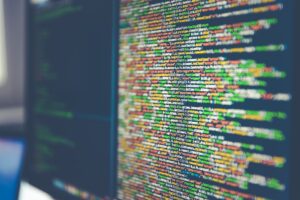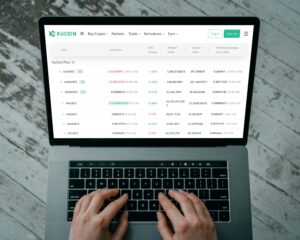The Role of k-Anonymity in Safeguarding IoT Data
Understanding k-Anonymity and Its Importance in IoT Data Analytics
k-Anonymity is a privacy-preserving technique that ensures individual data points are indistinguishable within a dataset, thereby protecting users from being re-identified. By grouping data in such a way that each record is indistinguishable from at least k-1 other records, k-Anonymity minimizes the risk of exposing personally identifiable information (PII) while still enabling valuable insights to be drawn from the data. In today’s digital age, where the Internet of Things (IoT) is rapidly expanding across regions like Saudi Arabia, the UAE, and key cities such as Riyadh and Dubai, data privacy has become a critical concern for businesses and consumers alike. The increasing number of connected devices generates massive amounts of data, often containing sensitive information that, if mishandled, could lead to significant privacy breaches. This is where the concept of k-Anonymity in IoT Data Analytics plays a vital role.
Advantages of Implementing k-Anonymity in IoT Networks
The implementation of k-Anonymity in IoT Data Analytics offers several significant advantages for organizations. Firstly, it helps businesses comply with increasingly stringent data privacy regulations, such as those in Saudi Arabia and the UAE, by ensuring that the data they process and analyze does not compromise user privacy. This is particularly important as consumers in these regions are becoming more aware of their digital rights and expect companies to prioritize their privacy. Secondly, k-Anonymity enables companies to continue deriving value from their IoT data without risking the identification of individual users. This balance between data utility and privacy protection is essential for businesses that rely on data-driven decision-making, especially in sectors like healthcare, finance, and retail, where sensitive information is frequently processed. By adopting k-Anonymity, organizations can enhance their reputation as responsible data stewards, fostering trust and loyalty among their customers.
Challenges and Considerations in Achieving k-Anonymity
While k-Anonymity is a powerful tool for preserving privacy in IoT data analytics, achieving it can be challenging. One of the primary challenges is determining the appropriate value of k—the number that dictates how many records must be indistinguishable from each other. Setting this value too low may not provide sufficient privacy protection, while setting it too high can lead to a loss of data utility. Another consideration is the complexity of implementing k-Anonymity in large, dynamic IoT datasets. As data is continuously collected and updated, maintaining k-Anonymity requires ongoing effort and sophisticated algorithms to ensure that the privacy of all users is consistently protected. In regions like the UAE and Saudi Arabia, where IoT adoption is growing rapidly, businesses must invest in the necessary infrastructure and expertise to implement and sustain k-Anonymity effectively. This investment not only safeguards user privacy but also positions companies as leaders in ethical data practices.
Best Practices for Implementing k-Anonymity in IoT Data Analytics
Developing Robust Anonymization Strategies
To successfully implement k-Anonymity in IoT Data Analytics, organizations must develop robust anonymization strategies that address the unique challenges posed by IoT data. This includes selecting the appropriate k-value, as well as employing additional techniques such as generalization and suppression to further protect individual data points. Generalization involves replacing specific data values with more general ones, while suppression involves removing certain data entirely to prevent re-identification. For instance, instead of storing precise location data, a company might store a generalized area or region. In Riyadh or Dubai, where data-driven services are becoming increasingly personalized, businesses must carefully balance the need for detailed data with the requirement to protect user privacy. By combining these techniques with k-Anonymity, organizations can create a comprehensive anonymization strategy that protects users while still enabling meaningful data analysis.
Integrating k-Anonymity with Other Privacy-Preserving Techniques
While k-Anonymity in IoT Data Analytics is a powerful tool, it is most effective when integrated with other privacy-preserving techniques. For example, differential privacy can be used in conjunction with k-Anonymity to add an additional layer of protection against re-identification attacks. Differential privacy introduces a controlled amount of randomness into the data, making it more difficult for attackers to identify individuals based on their unique data points. Another complementary technique is homomorphic encryption, which allows data to be processed in its encrypted form, ensuring that sensitive information remains protected even during analysis. By combining these methods, businesses in regions like Saudi Arabia and the UAE can enhance the overall security of their IoT networks, offering users greater confidence in the safety of their data.
Ensuring Compliance with Regional and Global Data Privacy Regulations
As businesses implement k-Anonymity in IoT Data Analytics, it is crucial to ensure that their practices comply with both regional and global data privacy regulations. In the Middle East, countries like Saudi Arabia and the UAE have established stringent data protection laws that require organizations to take proactive measures in safeguarding user data. Companies must stay informed about these regulations and adapt their privacy practices accordingly. This includes regularly reviewing and updating their k-Anonymity implementations to ensure they meet the latest standards. Additionally, businesses should consider obtaining certifications or working with third-party auditors to verify that their data privacy measures are effective and compliant. By prioritizing compliance, organizations can avoid legal risks and strengthen their reputation as trustworthy data custodians.
Conclusion
Implementing k-Anonymity in IoT Data Analytics is essential for businesses that aim to protect user privacy while still harnessing the power of data. By understanding the role of k-Anonymity, developing robust anonymization strategies, and integrating additional privacy-preserving techniques, companies can create a secure environment for data analysis that meets the expectations of both regulators and consumers. As IoT networks continue to expand in regions like Saudi Arabia, the UAE, Riyadh, and Dubai, businesses that prioritize data privacy will not only comply with regulations but also build stronger relationships with their customers, ultimately driving long-term success in an increasingly data-driven world.
#kAnonymity #IoTDataPrivacy #Cybersecurity #IoTAnalytics #DataSecurity #MiddleEastTech #Riyadh #Dubai #SaudiArabia #UAE













